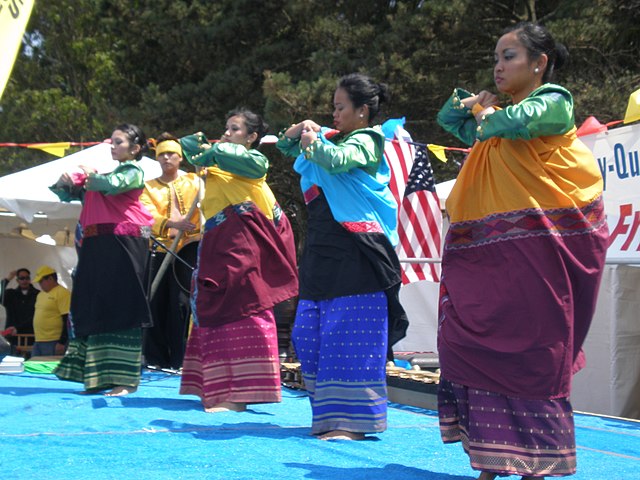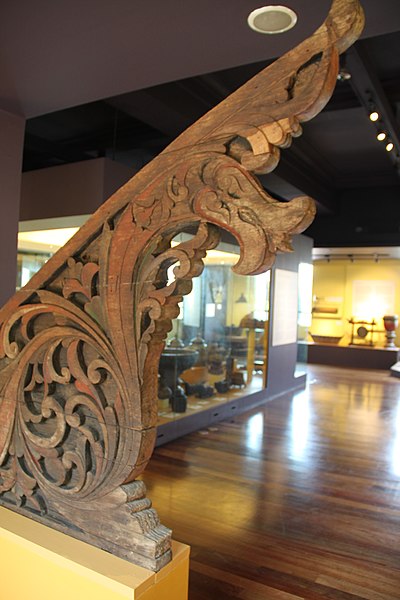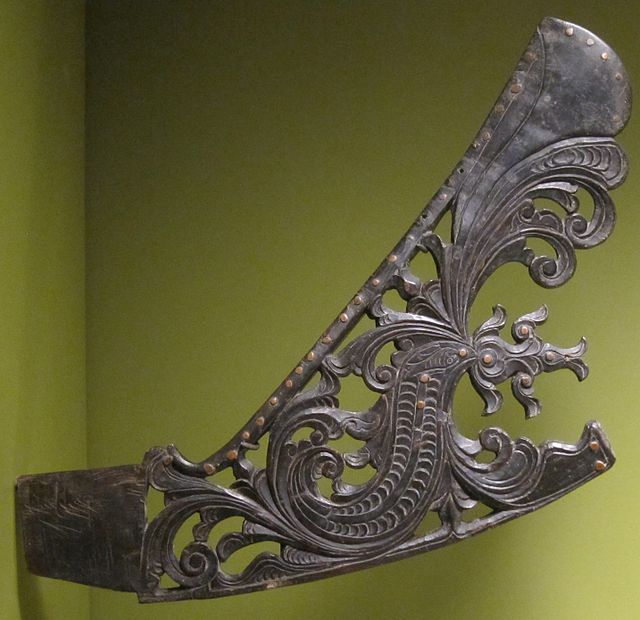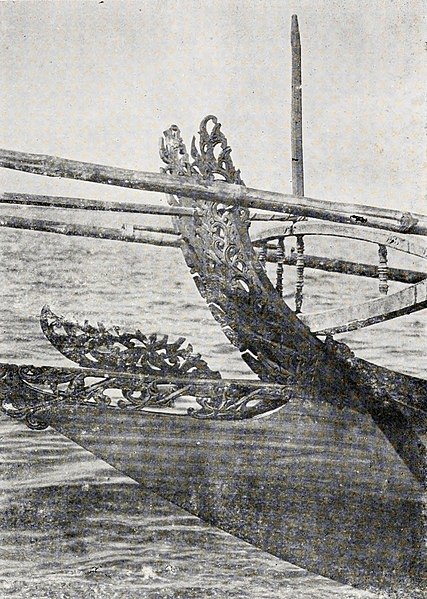The malong is a traditional Filipino-Bangsamoro rectangular or tube-like wraparound skirt bearing a variety of geometric or okir designs. The malong is traditionally used as a garment by both men and women of the numerous ethnic groups in the mainland Mindanao and parts of the Sulu Archipelago. They are wrapped around at waist or chest-height and secured by tucked ends, with belts of braided material or other pieces of cloth, or are knotted over one shoulder. They were traditionally hand-woven, with the patterns usually distinctive to a particular ethnic group. However, modern malong are usually machine-made or even imported, with patterns that mimic the traditional local designs.
Dancers performing the kapa malong malong, a traditional Maguindanao dance featuring the uses of the malong
Image: Malong worn around the waist
Image: Malong worn secured at the shoulder
Okir, also spelled okil or ukkil, is the term for rectilinear and curvilinear plant-based designs and folk motifs that can be usually found among the Moro and Lumad people of the Southern Philippines, as well as parts of Sabah. It is particularly associated with the artwork of the Maranao and Sama (Badjao) tribes, although it can also be found to a lesser extent among the Maguindanao, Iranun, Tausug, Yakan, and Lumad groups. The design elements vary among these ethnic groups, with the greatest refinement being found among the Maranao.
Detail of a panolong with a naga motif, from the National Museum of Anthropology
A Maranao kubing jaw harp handle made from horn and brass with an S-shaped naga design and a fish
A Maranao kulintang ensemble
Detail of okil carvings on a Sama-Bajau vinta







